Here are the absolute top places to see in Cologne, including the famous cathedral and attractions in the Old Town! I guarantee you’ll fall in love with Germany’s friendliest city in no time at all!
This post contains affiliate links, from which we may receive a commission. You can read our full affiliate disclosure here.
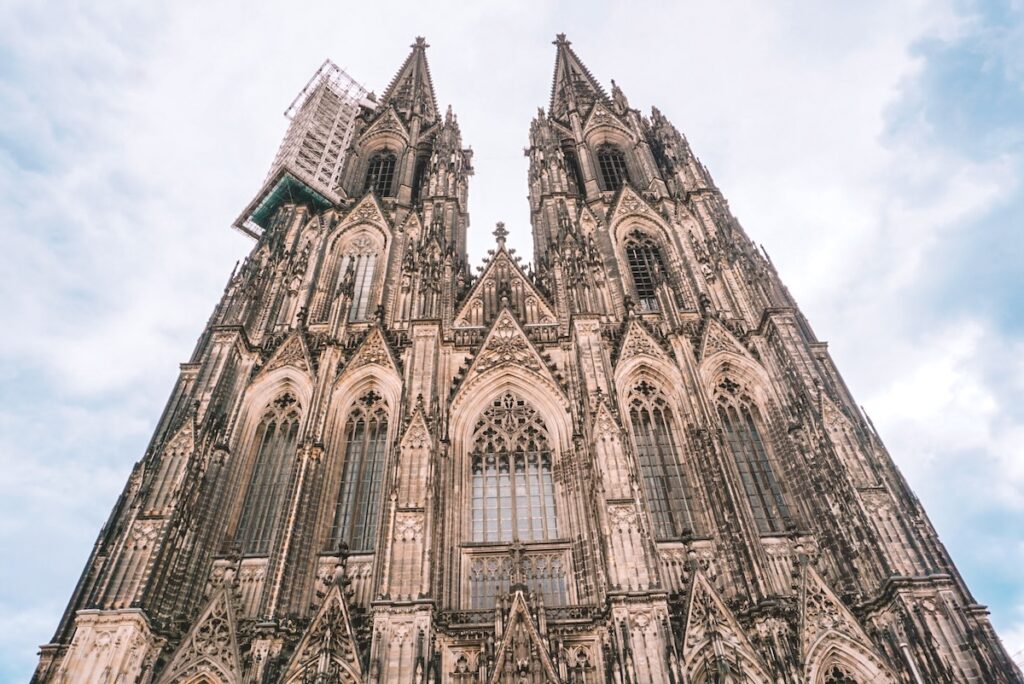
Tiny beer glasses with unending refills, rowdy Carnival festivities, a soaring Gothic cathedral, fragrant eau de cologne, and super friendly locals — Cologne, Germany is known for many things, and I can’t choose a favorite amongst them!
When planning a trip to Germany, Cologne might not be at the top of your bucket list. It’s not the prettiest, wealthiest, or largest city in Germany, but I’d argue that it’s one of the most interesting places to visit.
In this post, I’ll be sharing the top attractions in Cologne, Germany. Keep in mind that there are lots more things to do in Cologne beyond what I’m sharing in this post, but these are the absolute can’t-miss activities to add to your itinerary.
-Claire
Map of the Must-See Places in Cologne
Visit the Cologne Cathedral
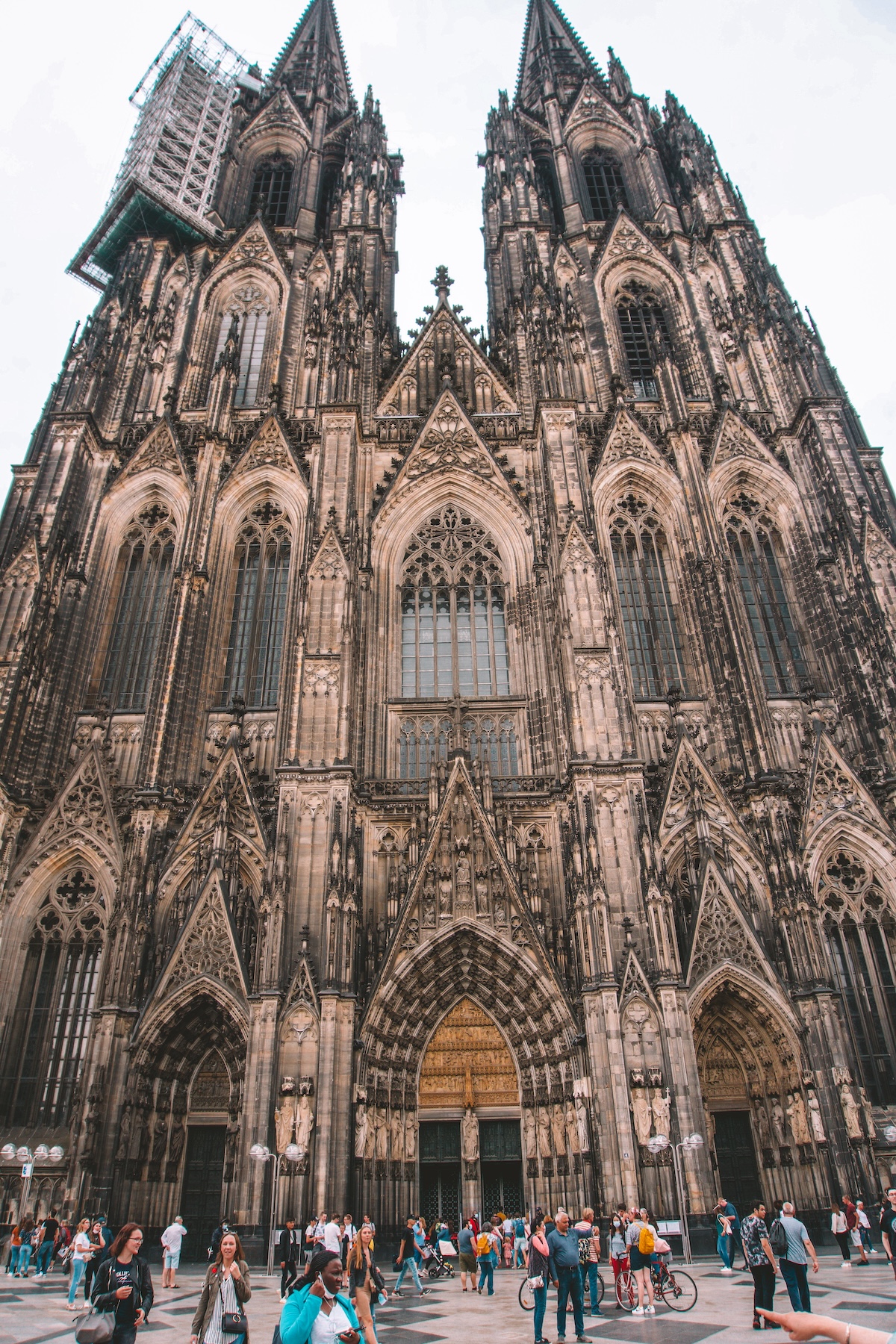
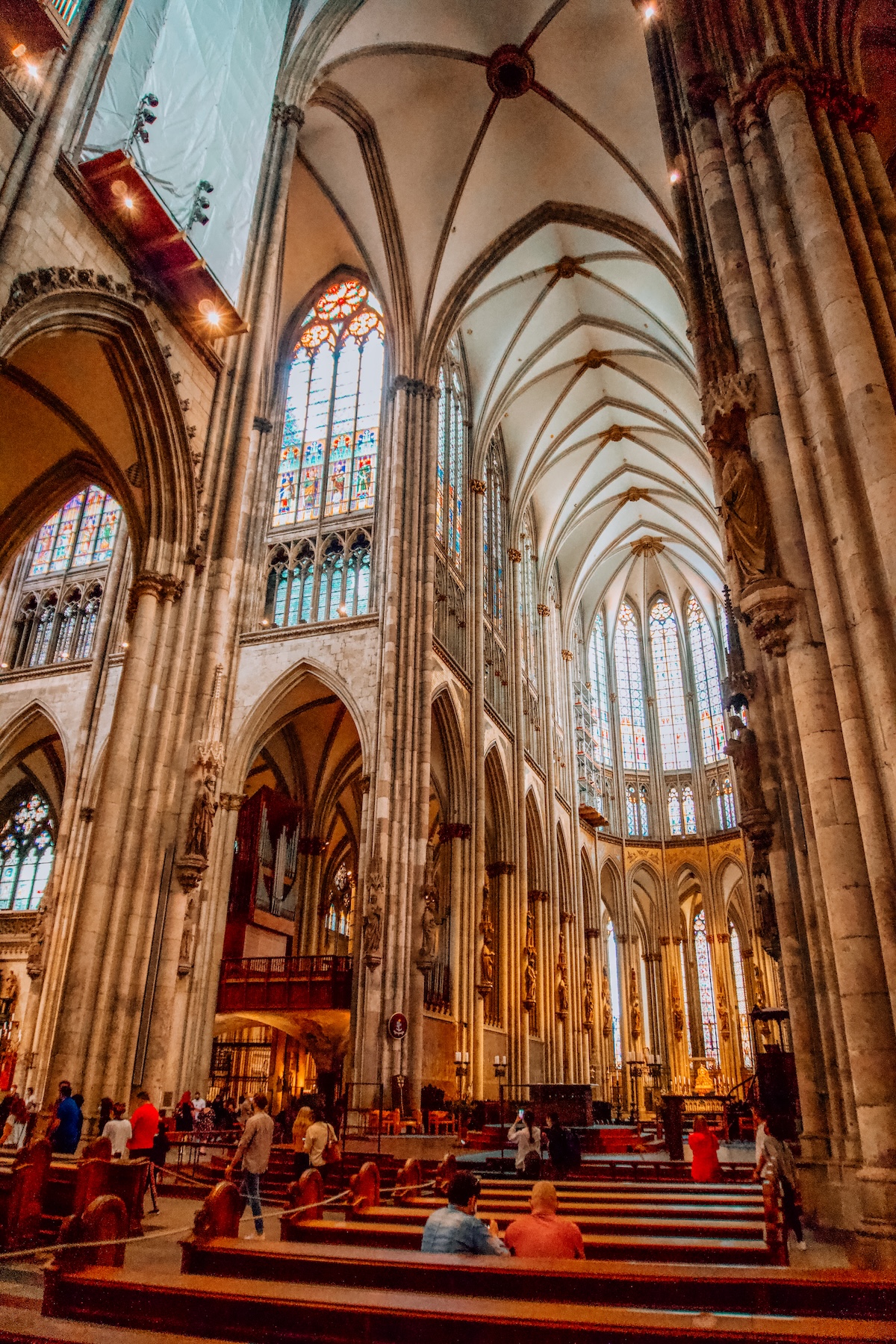
No visit to Cologne is complete without seeing the Cathedral (or Dom). The foundation stone was laid in 1248, but the cathedral wasn’t finished until 1880.
Although it took so long to finish, the cathedral looks like it dates back to the Middle Ages. This is because the various builders who worked on the cathedral throughout the years never deviated from the original architectural plan!
The cathedral was damaged in World War II, but it’s been remarkably restored. I took my sweet time wandering around the cathedral — there are so many statues, altars, and one-of-a-kind stained glass windows to admire.
Claire’s Tip: Note that the cathedral is free to enter, and you can stay inside as long as you like. I’ve visited Cologne a few different times, and no matter the season or time of day the Cathedral is spectacular.
See All 12 Romanesque Churches
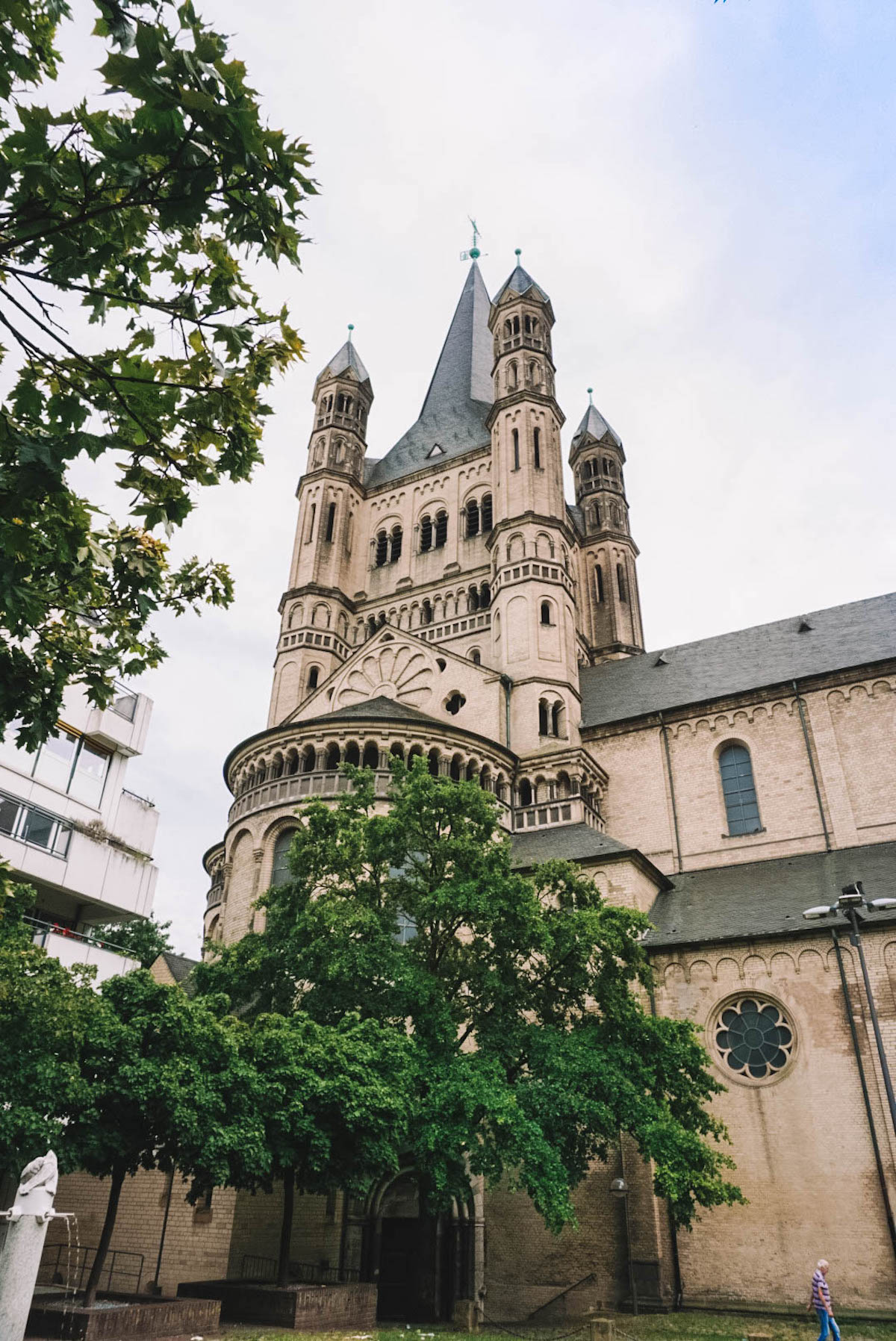
In addition to the Cathedral, Cologne is known for its Romanesque churches. There are quite a few — 12, to be exact!
You likely won’t have the time or desire to see all 12 churches on a single visit (I see one or two new ones each time I visit the city!). However, the three Romanesque churches I recommend visiting are:
- Groß St. Martin (Great St. Martin’s Church) — A former Benedictine church that’s a key feature in the city’s skyline
- St. Andreas — This beautiful church blends the Romanesque and Gothic architectural styles.
- St. Ursula — Named after the Breton princess Ursula. Legend has it that she and her 11,000 companions were martyred in Cologne.
All of the churches are free to enter, making them some of the best places to visit in Cologne!
Claire’s Tip: If you’re scratching your head wondering what “Romanesque” even means, it’s an architectural style that’s known for its use of rounded arches, pillars, and columns. The 12 Romanesque churches of Cologne were built sometime between 1150 and 1250.
Go on a Walking Tour
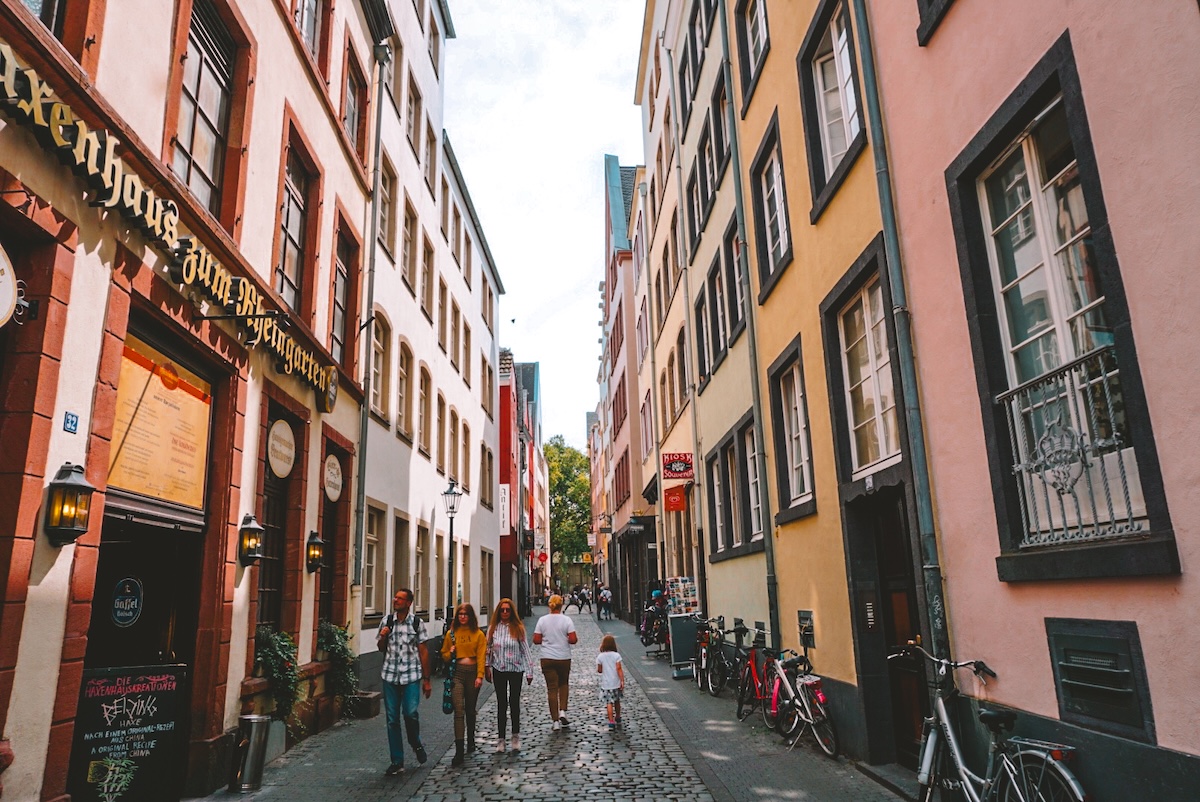
The walking tour I signed up for was the “Classic Cologne Free Walking Tour” with Freewalk Cologne. As the name suggests, this is a pay-what-you-want walking tour that takes you to some of the most well known spots in the city.
I loved this particular walking tour as it was a bit quirkier; the guide covered the basic historical facts about Cologne, and he also discussed the city’s culture, the architecture, and more.
Learning about not only the key dates and founders of the city, but also some of the more niche cultural practices — all from a local! — made me fall in love with the city even more.
Claire’s Tip: Walking tours not your thing? Book a guided bike tour instead to see the city like a local!
Visit a Museum or Two
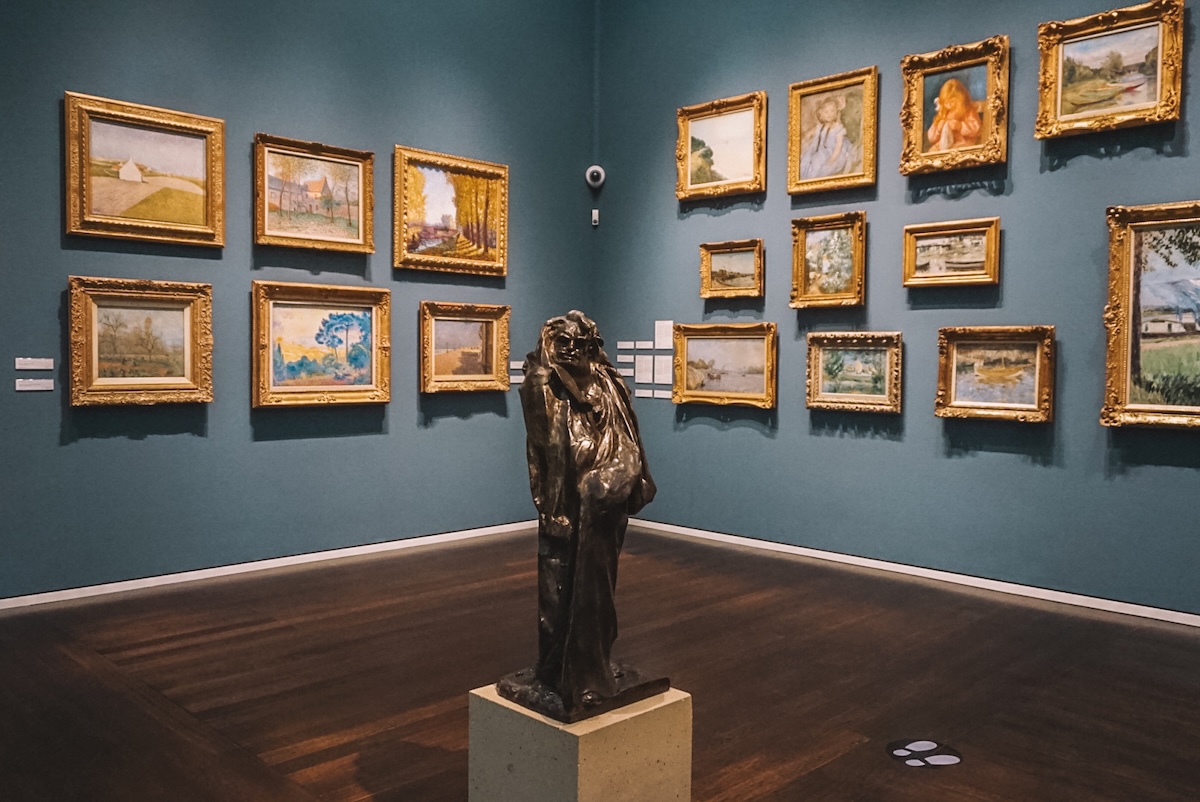
If you’re unsure what other places you should see in Cologne, visiting a museum is always a good idea.
There are many wonderful museums in Cologne, but the key ones to know are:
- Wallraf-Richartz-Museum (shown above) — A fantastic art museum with pieces ranging from Middle Ages, Baroque period, and the 19th century. This is my all time favorite!
- Römisch-Germanisches Museum (Romano-Germanic Museum) — Houses hundreds of Roman artifacts that were unearthed within Cologne. The most notable artifact on display is the Dionysus mosaic, which was the dining room floor of a Roman noble who lived in Cologne. Note that this museum is closed for rennovations until 2026, but a temporary exhibit has opened at The Belgian House (Cäcilienstraße 46)
- Ludwig Museum — Art museum with an expansive collection dating from the early 20th century to present day. It boasts the largest collection of Pop Art in all of Europe!
- Lindt Chocolate Museum — Learn about the 5,000-year history of chocolate as well as how chocolate is made today.
- Farina Fragrance Museum — Museum associated with the oldest fragrance factory in the world that’s still in operation.
- … and more!
Explore the Old Town (Altstadt)
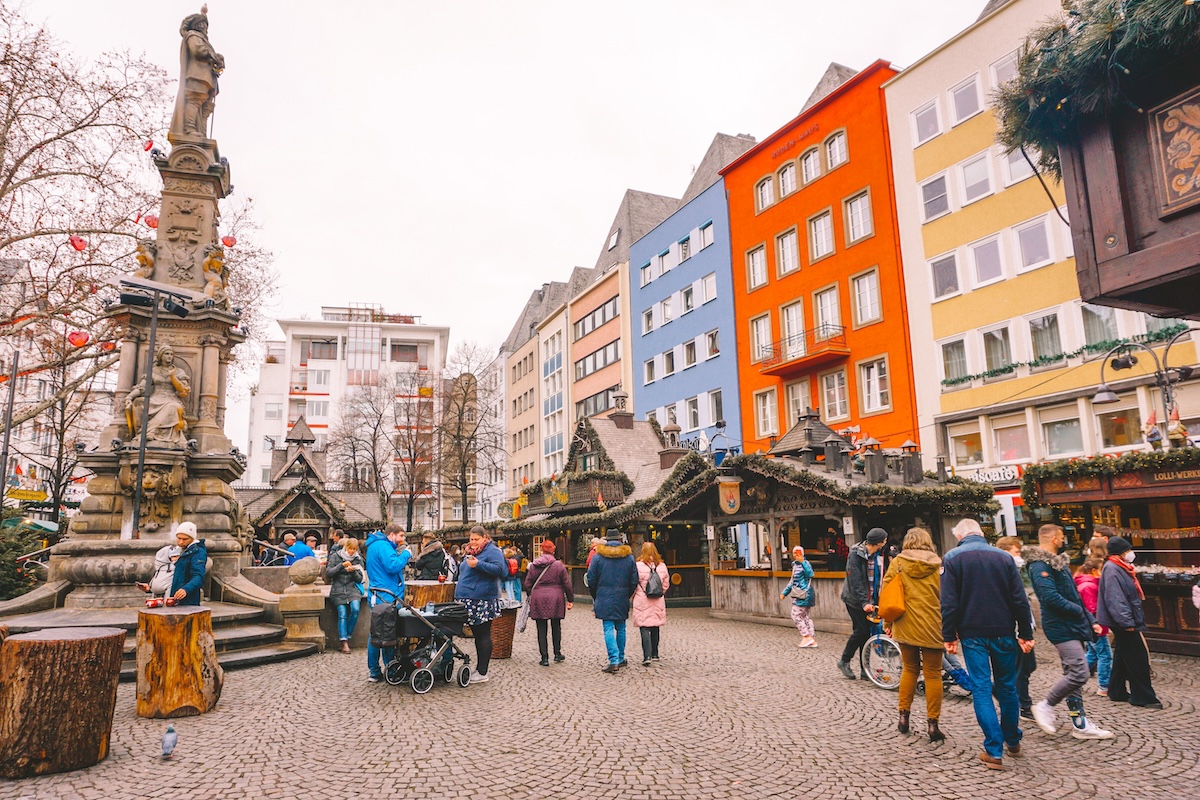
You’ll likely spend the bulk of your visit to Cologne in the Old Town. There is lots to do and see here, but if you’re in a time crunch you can easily walk around the Old Town and see the main attractions in 1 day.
Some of the tourist attractions on this list already fall within the Old Town, such as the Cathedral and a few of the Romanesque churches.
Specific sights to see in Cologne’s Old Town that you shouldn’t miss include:
- Alter Markt — Once connected with the Haymarket (Heumarkt). The Old Town Hall is located here, and this is also where one of my favorite Christmas markets in the city takes place! There are some beautiful Renaissance buildings here as well.
- Heumarkt — Served as a hay market in the Middle Ages. Impossible to miss the massive statue of Friedrich Wilhem III in the center of the square.
- Rhine Promenade — A great place to sip a beer (or non-alcoholic Schorle!) and chat with friends or rest your feet. You’ll see the city from a different perspective and can also photograph the Hohenzollern Bridge from here. One of my favorite places to visit in Cologne!
Claire’s Tip: To make the most of your time in the Old Town, book a guided walking tour of the area. This is also the best way to learn about the city’s history!
Walk Across the Hohenzollern Bridge
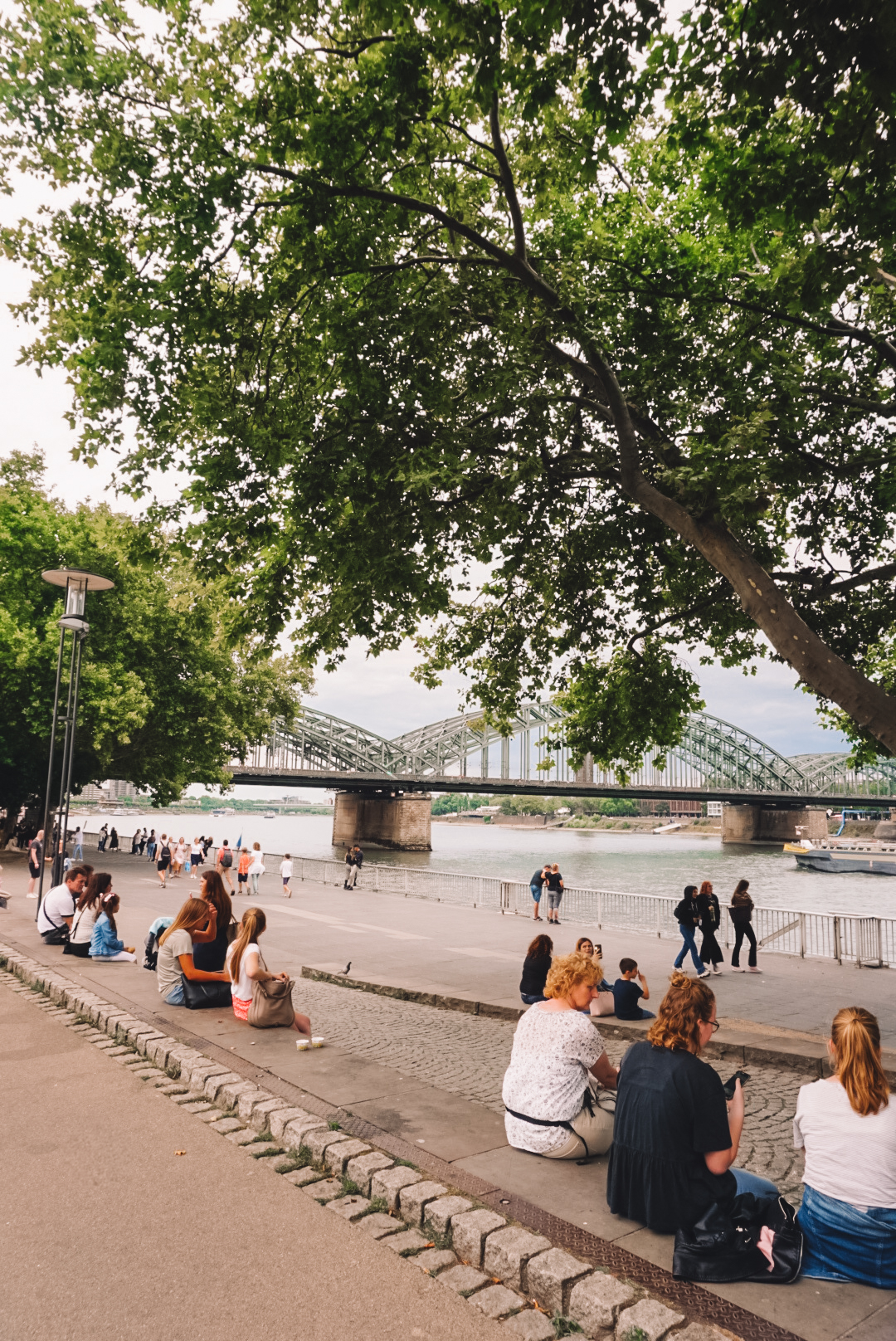
The Hohenzollern Bridge is one of the most beautiful bridges in Cologne. It’s the only bridge in the city that wasn’t destroyed in the WWII air raids — but alas, it was eventually blown up by the Nazis to make it tougher for the Allied forces to cross the Rhine River.
The reconstructed bridge is still beautiful, though, and offers a unique view of the city’s skyline from the opposite riverbank.
While crossing the river, look for the love locks that couples have affixed to the bridge to commemorate their relationships! Once you cross over the bridge, you can either admire the skyline from there or you can …
Go Up the KölnTriangle
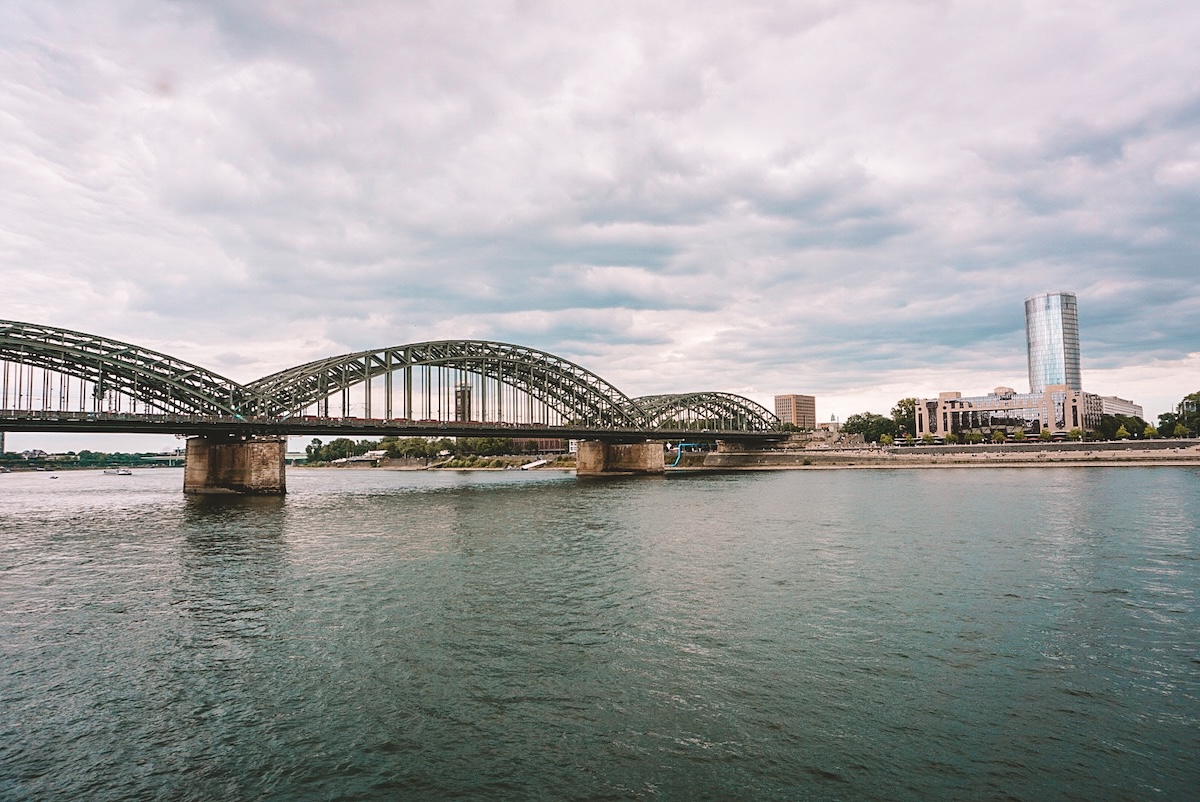
Across the Hohenzollern Bridge, on the opposite bank of the Rhine River and 29 floors up a high-rise building, you’ll find the KölnTriangle. It costs 5 Euros to enter, but the 360º view of the city is worth it!
If you’re in the city for the night, I recommend watching the sunset from the KölnTriangle. (However, this is one of the better known tourist attractions in Cologne so it can get crowded.)
Visit the Flora and Botanical Garden
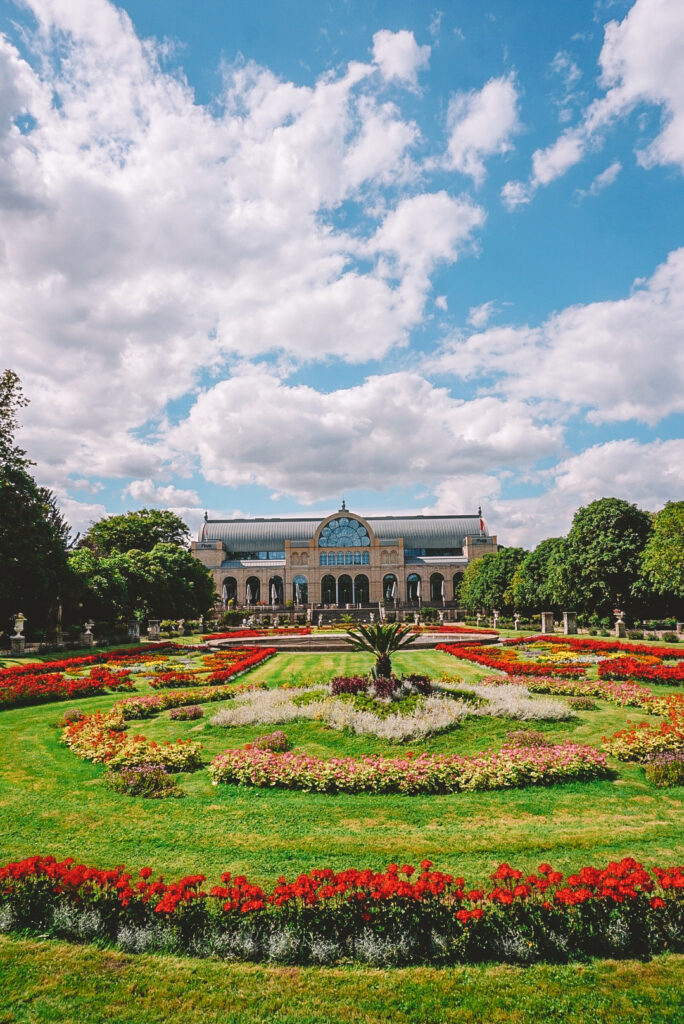
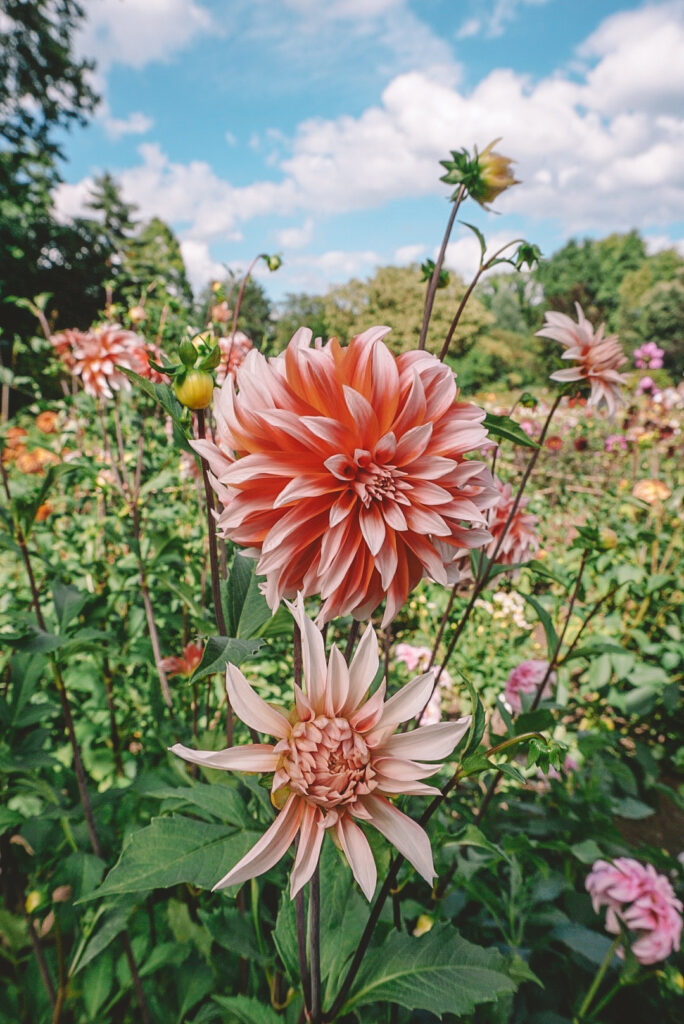
An underrated attraction in Cologne is the Flora and Botanical Garden. The gardens are free to enter and boast more than 10,000 species of plants.
The gardens are separated into themed gardens, each more eye-catching than the last. This is a wonderful place to visit in Cologne during the spring and summer months when the most flowers are in bloom!
Explore the Belgian Quarter
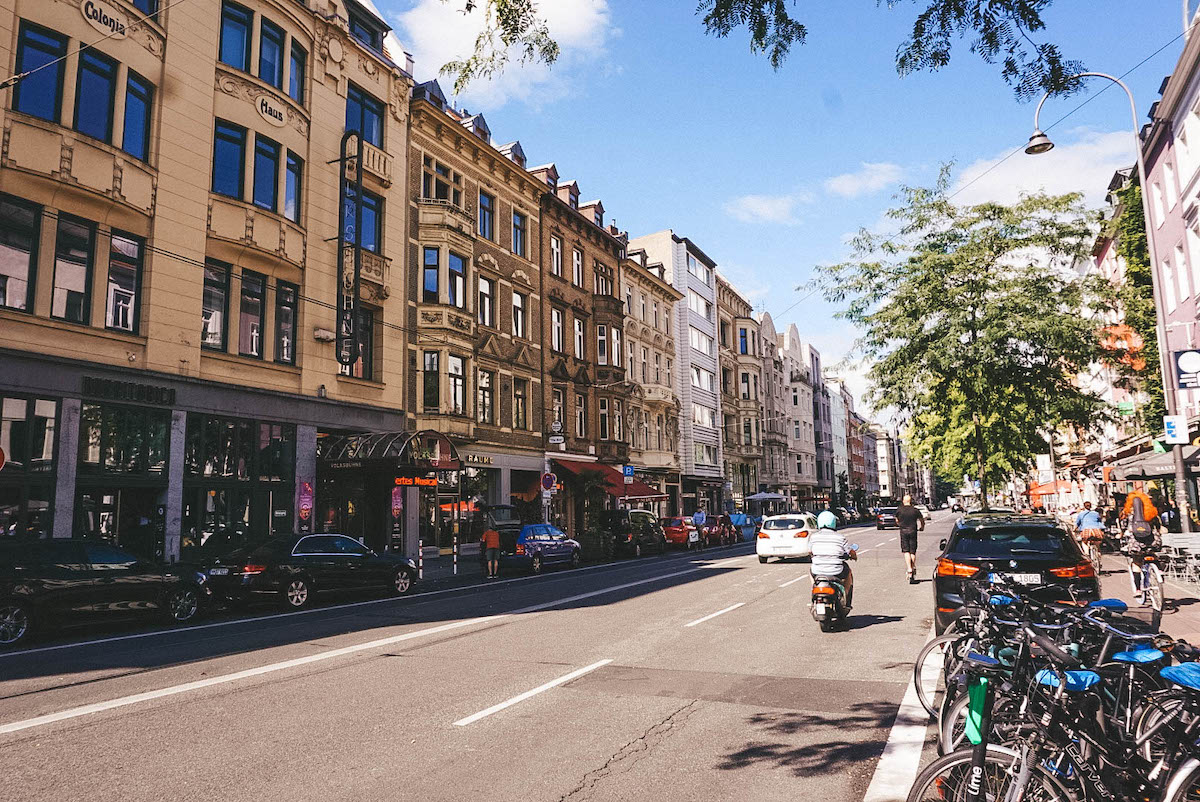
A walk around the Belgian Quarter is a must when visiting Cologne! This is one of the cooler neighborhoods in the city, with lots of cafes, boutiques, and pretty streets to discover.
Plan to window shop for an hour or so before grabbing a bite to eat in the Belgian Quarter.
Admire the Old City Gates
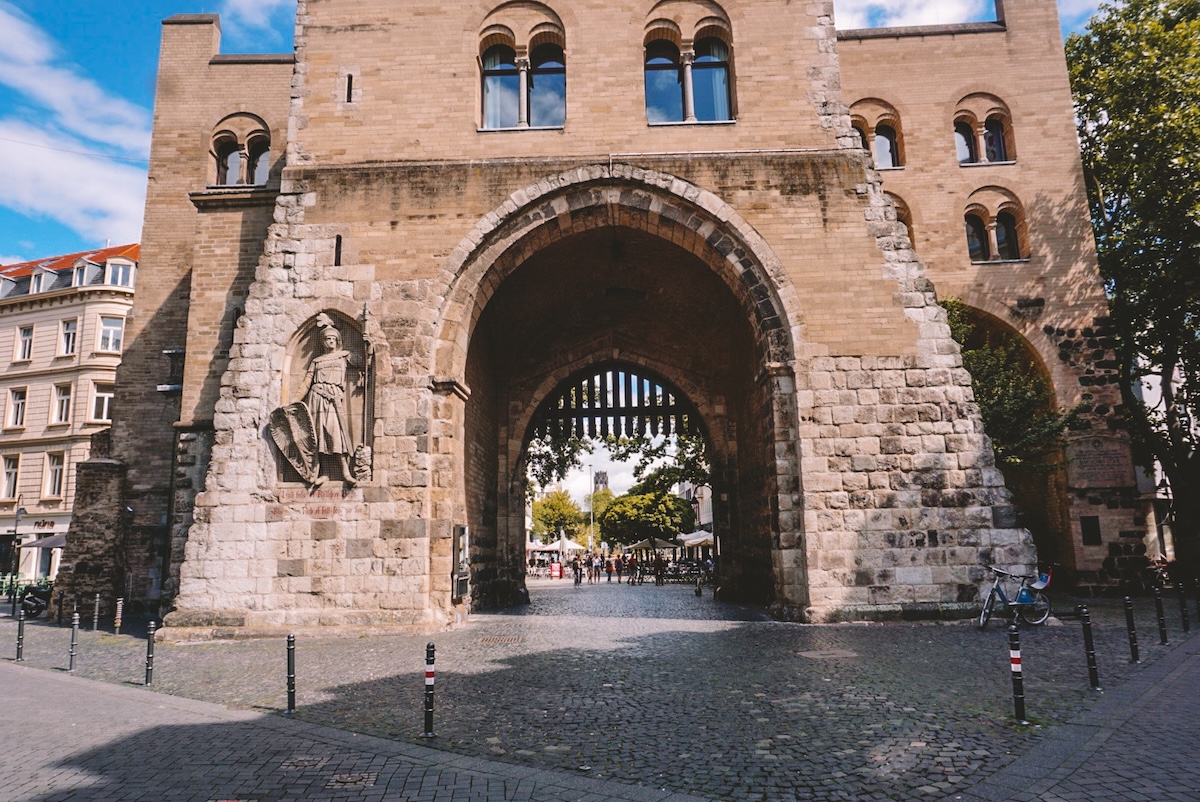
As luck would have it, some of Cologne’s city gates are still standing. The original city wall and gates were built by the Romans during the 1st through 3rd centuries.
In the Middle Ages, another (larger) wall was built around the city. There were 12 gates in total, which symbolized the city’s connectedness to Jerusalem, which also had 12 city gates.
There are three surviving medieval city gates in Cologne: the Hahnentor, Severinstorburg, and Eigelstein-Torburg, all of which have been marked on the map at the top of this guide.
Drink Kölsch (the Local Beer!)
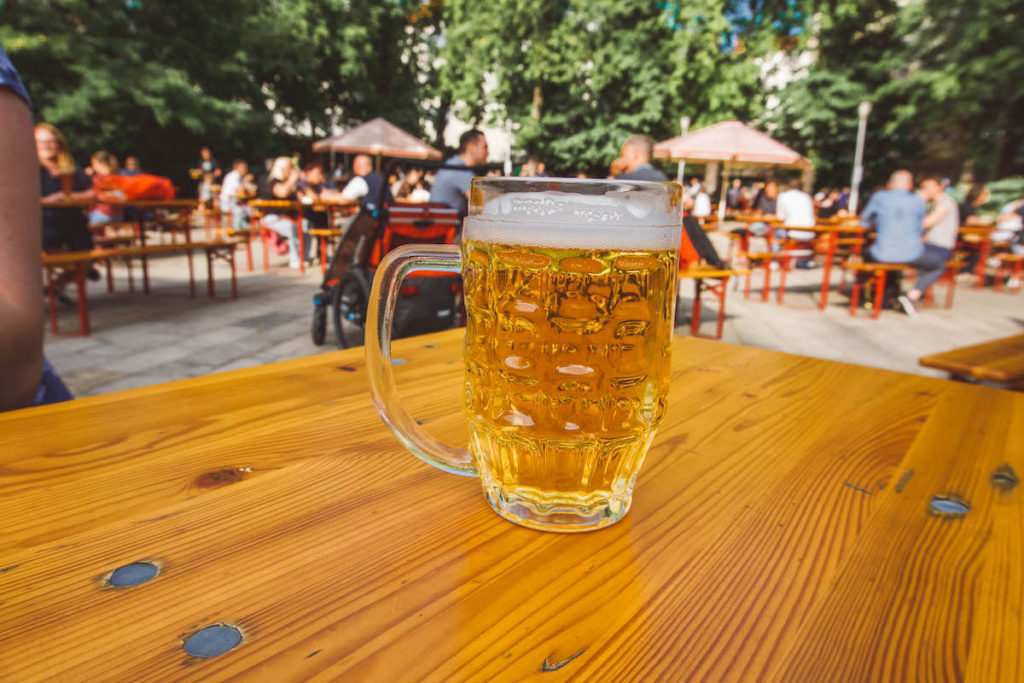
No visit to Cologne is complete without trying Kölsch! It’s a special kind of beer that’s only brewed in Cologne. (And no, the photo above is not of a proper glass of Kölsch, sorry 😣)
Kölsch is light in color and flavor, almost like a Pilsner. It’s typically served in small glasses (about 200ml) — which is a stark contrast to the liter beer steins you get in Munich at Oktoberfest!
When ordering Kölsch at a bar or restaurant, the waiter will refill your glass automatically until you place your coaster on top of the rim to signal that you no longer need refills.
Claire’s Tip: If you want to try Kölsch while you’re in Cologne, some of the best breweries are: Päffgen, Mühlen, and Peters. Or, book a brewery tour that includes tastings!
December Only: See the Cologne Christmas Markets!
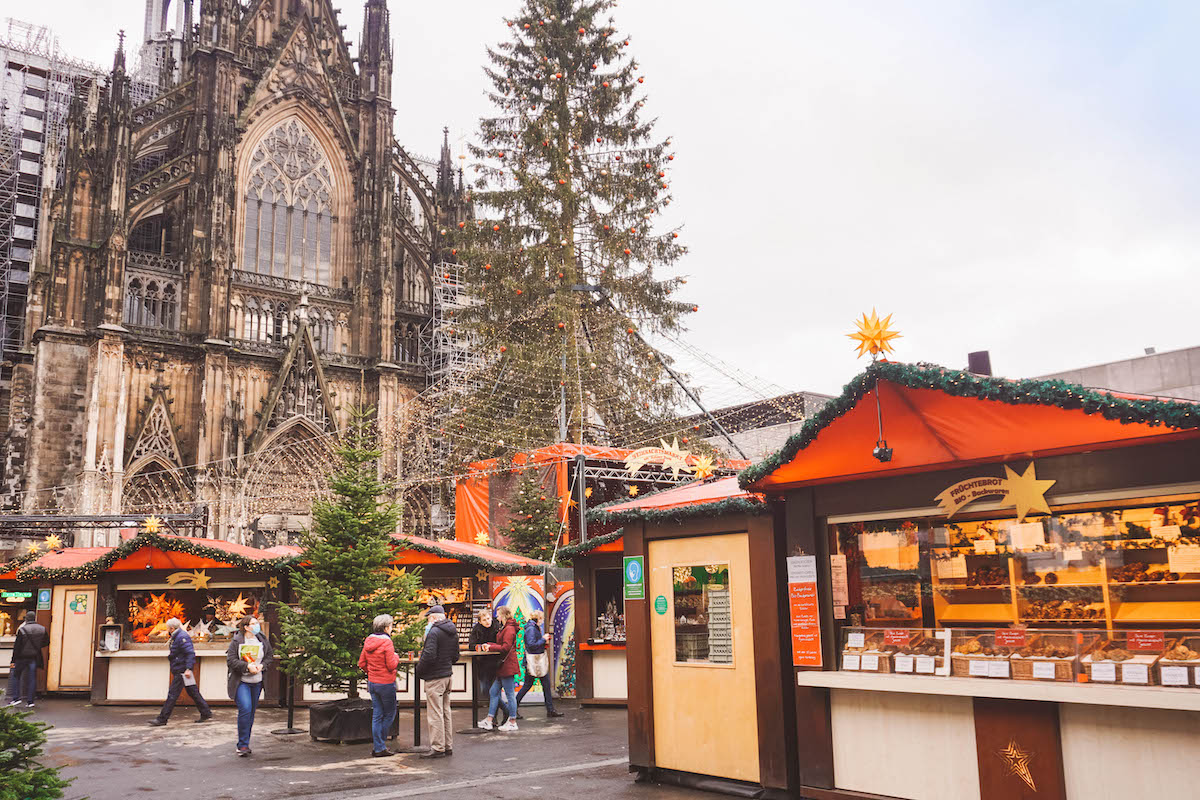
If you’re lucky enough to be visiting Cologne in December, allow yourself a day or two to visit the city’s many Christmas markets. There are five major Christmas markets in Cologne (plus lots of smaller markets that crop up throughout the Advent season).
I have a full guide to Cologne’s Christmas markets on my blog, but my two favorites are at the Alter Markt and the Heumarkt. These are two of the best Christmas markets in Germany, so definitely visit them if you can!
Take a Day Trip
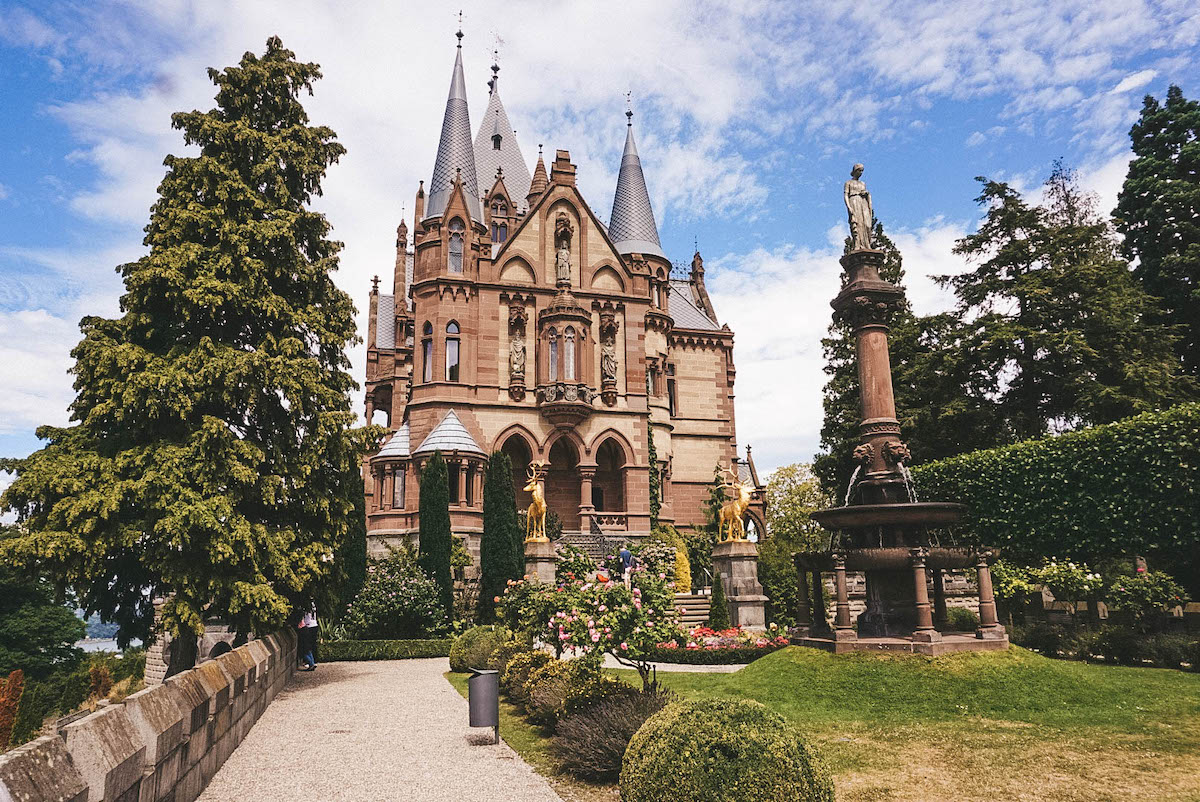
There are many great day trips from Cologne, but my favorites are Brühl, Königswinter (where Drachenburg Castle is located), and Düsseldorf.
All of these destinations are easily accessible by train and are roughly an hour or less away from the city center.
Where to Eat in Cologne, Germany
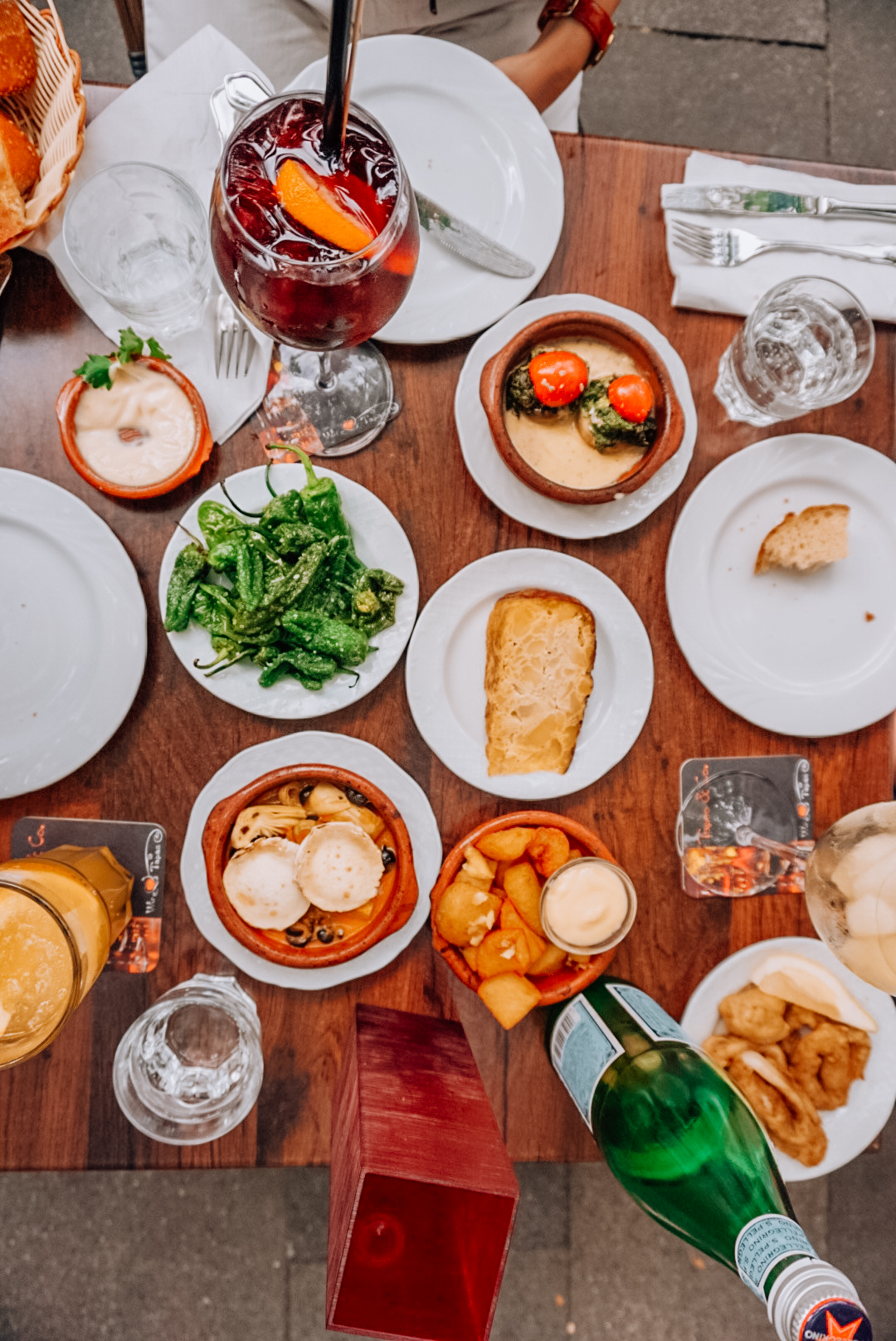
Cologne isn’t short on good eateries, but there were a few I visited that I can highly recommend.
Most of these restaurants were recommended to me by a friend who lives in the city, so know that these places are loved by locals too!
- Cafe Burr — Trendy breakfast spot in the Belgian Quarter. I had the shakshuka, but the breakfast bowls looked good too!
- Cafe Schmitz — Some of the best ice cream I’ve had in my life.
- Caminetto — Delicious pizza.
- Lu — Vietnamese food at a reasonable price.
- Herr Pimock — Another trendy brunch spot. Visit during the work week, as it fills up on the weekends.
- Café Bo — Another solid breakfast / brunch spot.
- Fassbender — Café with a wide variety of baked goods (both sweet and savory).
- Tapeo & Co. — Really delicious tapas (pictured above).
Frequently Asked Questions
YES! Cologne is an underrated city in Germany that is absolutely worth visiting. As I’ve mentioned already in this post, it’s not the prettiest of cities but the history, culture, and attractions are all fantastic.
Cologne is known around the world for its soaring Gothic cathedral, the Kölner Dom. Entrance to the cathedral is free and I make a point to visit each time I’m in the city. Cologne is also known for its rowdy Carnival festivities, and the open-mindedness and kindness of the locals.
If you’ve only got one day to spend in Cologne, I suggest following this 1-day itinerary to make the most of your flying visit. It’s budget-friendly and includes a visit to the cathedral (a must!), a guided walking tour of the Old Town, and the other absolute must-visit attractions.
Personally, I thought four days in Cologne was the perfect amount of time, but that’s because I took a couple day trips. If you plan on staying just in the city and don’t want to take day trips, 48 hours should be enough time to squeeze in the top places to see in Cologne.
The public transport system in Cologne is great. I recommend buying a day pass or week pass, depending on how long you’ll be in the area.
Most of the things to do in Cologne that I mentioned above are within walking distance of each other, but you’ll likely wind up using public transportation a fair amount too.
If you love Hop-On, Hop-Off Bus Tours, there’s that option as well (although using public transportation here is very easy!).
Cologne and Düsseldorf are known to have a (mostly friendly) rivalry. Personally, I think that Cologne has a more interesting history and local culture, but Düsseldorf is a little quieter, prettier, and, yes, is wealthier.
The two cities are about 30 minutes away from each other via train, and I highly recommend visiting both while you’re in this part of Germany!
I stayed in the Belgian quarter and would recommend it! You’re close enough to the city center that you can walk or take the tram, but the restaurants in the Belgian quarter are better and not as touristy.
Good hotels near this area include NH Collection, Tante ALMA’s Kölner Hotel, and Hotel Flandrischer Hof.
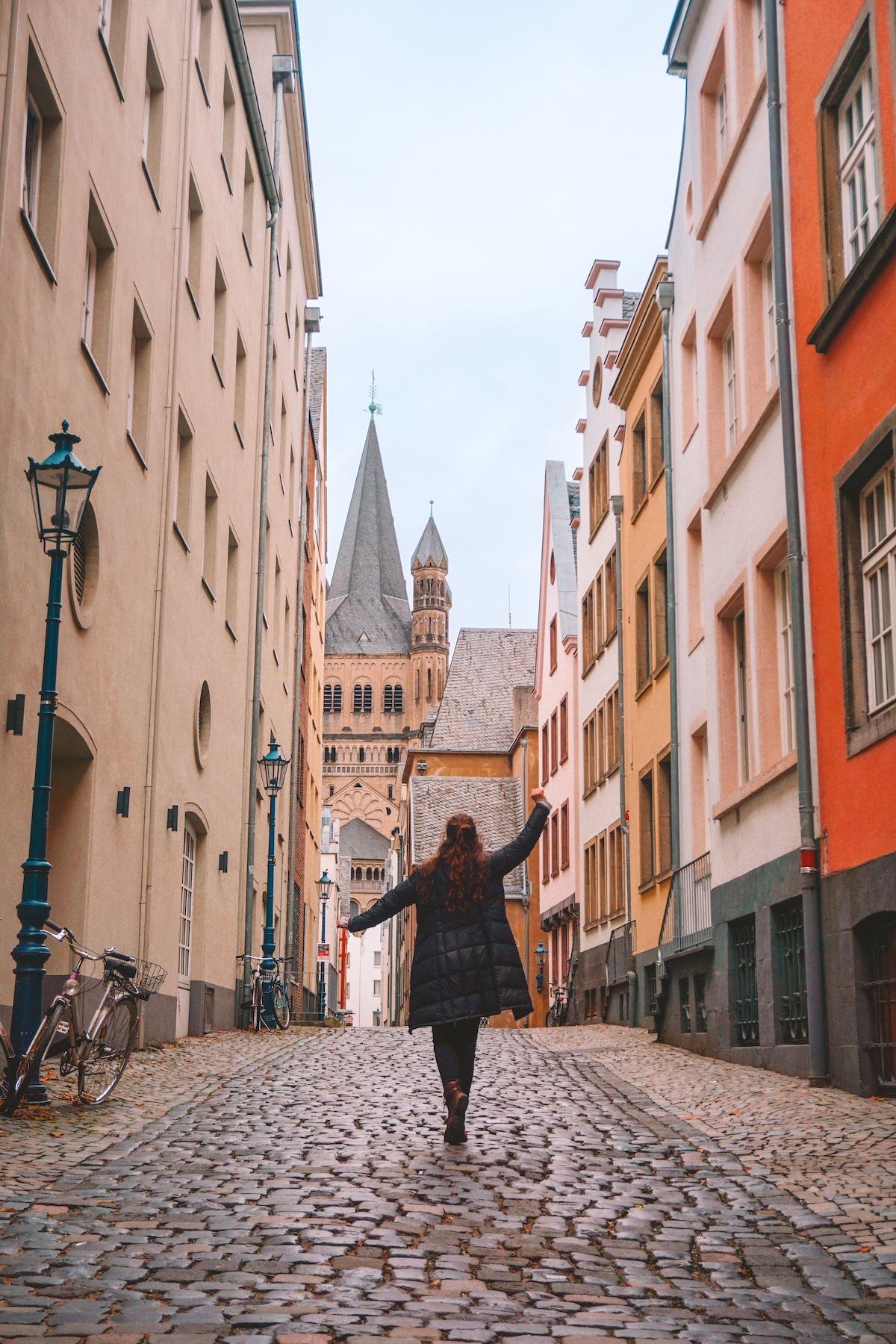
Viel Spaß in Köln!
Now that you know what to do in Cologne, I hope you have an amazing visit! I’ve been to the city a few times and always enjoy my stay.
If you have any questions about the top things to do in Cologne that are mentioned in this post or about visiting the city in general, leave me a comment below!
Don’t forget to follow me on Instagram to keep up with my daily adventures in Berlin and beyond!

More Cities to Visit Along the Rhein River:
- Düsseldorf 1-Day Itinerary
- The Top Things to Do in Bonn (Former Capital of West Germany!)
- The Best Things to Do in Wiesbaden (Germany’s Historic Spa City)
- What to See in Mainz: Germany’s Wine Capital
- Koblenz Day Trip Guide: Where the Rhein and Moselle Rivers Meet
- All of my Germany travel recommendations!
Comments & Reviews
I loved reading this, Claire! Your blog is so great, and this post really brought me back to when my family and I lived in Köln. So glad you found Caminetto’s! That was our little family spot and we ate there all the time–we got to be really good friends with the owner (our dogs were best friends haha)
The Kölner Dom remains one of my all time favorite places in the world. 🙂
Thank you so much, Ellie!! I didn’t know you had lived in Cologne, how cool! The city definitely grew on me the longer I was there. I don’t think the Christmas markets will be open this year, but I’d love to return to Cologne around Christmastime 2021. Hope you’re doing well! xx
Thank you so much Claire. Your tips are awesome. My husband and i are planning to visit Cologne on May 2024.. How do you get the day pass and how much does it cost. Is the tickets for the castles expensive and how do i get the tickets.